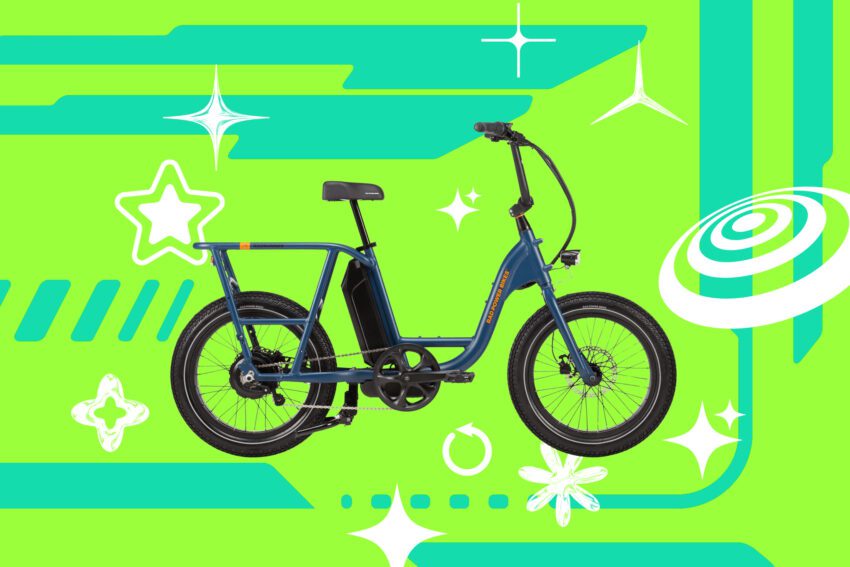
how i went from an e-bike hater In an unexpected turn of events, a Seattle resident recounts their transformation from a staunch e-bike skeptic to a fervent advocate for electric bicycles.
how i went from an e-bike hater
The Hilly Reality of Seattle Cycling
A wise person once observed that cycling in my neighborhood in Seattle is akin to going uphill both ways. This observation rings true for anyone who has attempted to navigate the city’s undulating terrain. My home is perched on a steep hill, and the business district I frequent is situated on another incline. Even a simple trip to the local coffee shop involves a series of challenging ascents. Each time I embarked on one of these rides, I found myself grinding through yet another steep climb, swearing under my breath as I pedaled. It was during these moments of frustration that I would often hear the unmistakable whir of an electric motor behind me.
Typically, it was someone on an e-bike—often one of the few Lime bikes in the city that hadn’t been carelessly abandoned in the middle of a sidewalk—who would zip past me effortlessly. They appeared unbothered by the steep inclines, not sweating profusely or cursing the existence of hills. In fact, some riders weren’t even pedaling. The nerve, I thought. I swore I would never succumb to the allure of these electric contraptions.
The Initial Skepticism
My disdain for e-bikes stemmed from a mix of pride and a traditionalist view of cycling. To me, cycling was about the physical challenge, the sweat, and the sense of accomplishment that came with conquering a steep hill. I believed that using an e-bike was akin to cheating. It felt like a betrayal to the very essence of cycling. My friends shared similar sentiments; we often joked about the “lazy” riders who opted for electric assistance instead of relying solely on their own strength.
Moreover, I held misconceptions about e-bikes. I thought they were heavy, cumbersome, and only suitable for those unwilling to put in the effort. I envisioned them as a passing fad, a gimmick that would never replace traditional bicycles. This mindset was reinforced by the limited exposure I had to e-bikes in my community. Most of the e-bike riders I encountered seemed to be casual users, not serious cyclists, which only fueled my skepticism.
A Change of Heart
However, my perspective began to shift when I decided to take a closer look at the e-bike phenomenon. I attended a local cycling event where various e-bike models were showcased. It was here that I had my first hands-on experience with an electric bicycle. I approached a sleek model, intrigued yet hesitant. The salesperson encouraged me to take it for a spin, assuring me that it would be a game-changer.
With a mix of excitement and trepidation, I hopped on the e-bike. The moment I pressed the pedal, I felt a surge of power. The electric motor kicked in, and I was propelled forward with an ease I had never experienced before. I quickly realized that the e-bike was not just about avoiding hills; it was about enhancing the cycling experience. I could maintain a higher speed with less effort, allowing me to enjoy the ride rather than dread the climbs.
Understanding the Technology
As I delved deeper into the world of e-bikes, I began to understand the technology behind them. Most e-bikes are equipped with a battery-powered motor that assists the rider’s pedaling. This assistance can be adjusted based on the rider’s preference, allowing for a customizable experience. The motors are designed to provide a boost, making it easier to tackle steep hills or long distances without exhausting oneself.
Furthermore, I learned about the various types of e-bikes available on the market. From commuter models designed for urban environments to mountain e-bikes built for off-road adventures, there was a wide range of options tailored to different riding styles and needs. This diversity made me realize that e-bikes could cater to a broader audience, including those who might be intimidated by traditional cycling or those looking to incorporate more physical activity into their daily routines.
The Benefits of E-Biking
As my understanding of e-bikes grew, so did my appreciation for their benefits. One of the most significant advantages is their potential to promote cycling as a viable mode of transportation. In a city like Seattle, where traffic congestion is a common issue, e-bikes offer an alternative that can alleviate some of the burden on the roads. They allow riders to cover longer distances without the fatigue typically associated with traditional cycling.
Additionally, e-bikes can contribute to a healthier lifestyle. The electric assistance allows individuals to engage in physical activity at their own pace, making cycling more accessible to a broader demographic. This inclusivity can encourage more people to adopt cycling as a regular mode of transportation, ultimately leading to improved public health outcomes.
Environmental Impact
Another compelling reason to embrace e-bikes is their positive environmental impact. With growing concerns about climate change and air pollution, e-bikes present a sustainable alternative to car travel. They produce zero emissions during operation and can significantly reduce the carbon footprint of daily commutes. By choosing an e-bike over a car, riders contribute to cleaner air and a healthier planet.
Community and Culture
As I began to embrace the e-bike culture, I discovered a vibrant community of riders who shared my newfound enthusiasm. Local cycling groups began to organize e-bike rides, fostering a sense of camaraderie among enthusiasts. These events not only provided an opportunity to connect with fellow riders but also served as a platform for sharing tips, experiences, and recommendations for the best e-bike models.
Moreover, I noticed a shift in the perception of e-bikes within my social circle. Friends who once scoffed at the idea of electric bicycles began to express curiosity. Some even decided to test ride e-bikes themselves, leading to lively discussions about the merits of this mode of transportation. The stigma surrounding e-bikes started to dissipate, replaced by a growing recognition of their practicality and benefits.
Personal Transformation
My journey from an e-bike hater to a believer has been transformative, not just in terms of my cycling habits but also in my outlook on fitness and transportation. I have come to appreciate the balance between traditional cycling and the advantages offered by e-bikes. While I still enjoy the challenge of a steep climb on my regular bike, I now recognize that e-bikes can complement my cycling experience rather than detract from it.
Incorporating e-biking into my routine has allowed me to explore new areas of Seattle that I might have otherwise avoided due to the daunting hills. I can now enjoy leisurely rides along the waterfront or venture into neighborhoods that were previously off-limits due to their elevation. The freedom and accessibility that e-bikes provide have opened up a new world of possibilities for my cycling adventures.
Conclusion
In conclusion, my initial skepticism towards e-bikes has evolved into a genuine appreciation for their benefits. They offer a practical solution for navigating hilly terrains, promote a healthier lifestyle, and contribute to environmental sustainability. As more people embrace e-bikes, the cycling community continues to grow, fostering a culture that values inclusivity and accessibility.
While I may have once viewed e-bikes as a form of cheating, I now see them as a valuable tool that enhances the cycling experience. My journey serves as a reminder that sometimes, it takes a personal experience to challenge preconceived notions and embrace new possibilities. As I ride through the streets of Seattle, I am grateful for the electric boost that has transformed my cycling adventures.
Source: Original report
Was this helpful?
Last Modified: September 19, 2025 at 5:38 pm
1 views















